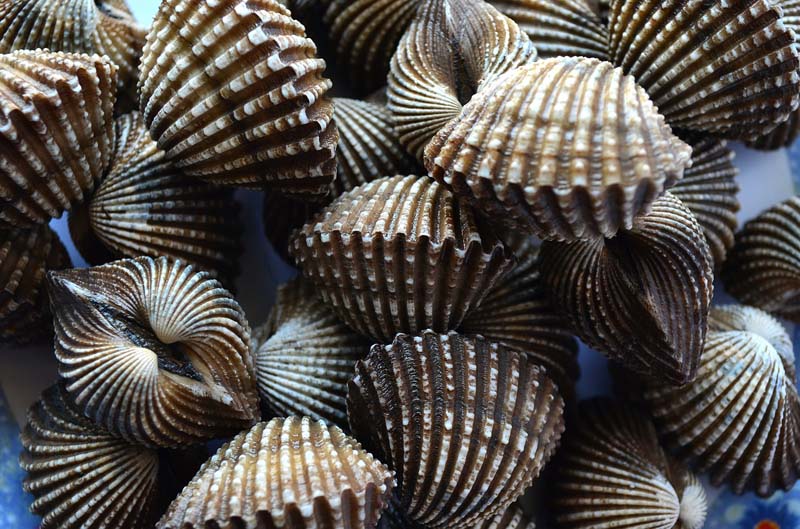
One of the most beloved annual events Florida's Gulf Countyis
Scallop Season. Due in large part to area climate events that occurred in 2015, the scallop season has been put into jeopardy. This year the Florida Fish & Wildlife Conservation Commission (FWC) is undertaking a major coastal restoration to ensure that the scallop population will continue to grow and thrive for many generations to come.
Scallop season delayed. Better late than never.

Scallop season had traditionally been held in the late summer/early fall. Making the season earlierin 2010to appeal to summer visitors to the region has ultimately led to immature, smaller scallops, as they are not allowed the proper time to mature and grow. Compounding all of this this was the red tide even that occurred last winter during the scallops natural spawning time. As a result of all of these factors, the overall number of scallops in the area has decreased somewhat alarmingly over the past five years. In response, Gulf County has opted for a compromise to cancelling this year's season. After a series of public workshops, the Florida Wildlife Conservation Commission (FWC) voted to
push scallop season back to it's more traditional time. This year, the limited scallop season will begin on August 22nd and run only until Labor Day (September 5th.) The bag limit has also been reduced to 40 scallops per person and 200 per boat.
What are scallops anyway?
Scallops are members of the Phylum Mollusca. This family includes clams, snails, squids, sea slugs, mussels, oysters and octopuses. Like clams, oysters & mussels, scallops are bivalves. Scallops are capable of swimming by opening and closing their fan shaped, ridged shells using their adductor muscle. This is the meaty part of the scallop that so many of us find delectable. One of the most unique traits of the scallop is their reproductive system. Most scallops are hermaphrodites, meaning they have both male and female sex organs. Scallops spawn, releasing eggs and sperm. Once fertilized, an egg attaches to objects along the sea floor with byssal threads. As they mature, they lose this thread attachment and are able to swim about freely. Disruptions in their environments can make spawning difficult and this is what seems to have occurred last year for our area scallop population.
Why this is all good news for scallops and scallopers alike.
The added benefiting of pushing back the scallop season is to bring a fresh new wave of tourists and visitors to the area. The weather is still amazing, warm and beautiful, but the big crowds will be gone, leaving stretches of quiet, undisturbed beaches, along with better prices on everything from lodging to dining. The compromise has been embraced by area residents, tourism vendors, local politicians and conservationists and the FWC alike. In working together to ensure the future of the scallop populations, everyone understands that a shortened and delayed season will ultimately lead to the preservation and survival of the region's scallops.Conservation rules are being enforced now and into the future. Caged scallops are being placed within St. Joseph Bay to help promote localized scallop spawning and the area will be protected from all harvesting. All of these efforts and precautions will help to ensure that there are scallops to enjoy now and into the future.
 One of the most beloved annual events Florida's Gulf Countyis Scallop Season. Due in large part to area climate events that occurred in 2015, the scallop season has been put into jeopardy. This year the Florida Fish & Wildlife Conservation Commission (FWC) is undertaking a major coastal restoration to ensure that the scallop population will continue to grow and thrive for many generations to come.
One of the most beloved annual events Florida's Gulf Countyis Scallop Season. Due in large part to area climate events that occurred in 2015, the scallop season has been put into jeopardy. This year the Florida Fish & Wildlife Conservation Commission (FWC) is undertaking a major coastal restoration to ensure that the scallop population will continue to grow and thrive for many generations to come. Scallop season had traditionally been held in the late summer/early fall. Making the season earlierin 2010to appeal to summer visitors to the region has ultimately led to immature, smaller scallops, as they are not allowed the proper time to mature and grow. Compounding all of this this was the red tide even that occurred last winter during the scallops natural spawning time. As a result of all of these factors, the overall number of scallops in the area has decreased somewhat alarmingly over the past five years. In response, Gulf County has opted for a compromise to cancelling this year's season. After a series of public workshops, the Florida Wildlife Conservation Commission (FWC) voted to push scallop season back to it's more traditional time. This year, the limited scallop season will begin on August 22nd and run only until Labor Day (September 5th.) The bag limit has also been reduced to 40 scallops per person and 200 per boat.
Scallop season had traditionally been held in the late summer/early fall. Making the season earlierin 2010to appeal to summer visitors to the region has ultimately led to immature, smaller scallops, as they are not allowed the proper time to mature and grow. Compounding all of this this was the red tide even that occurred last winter during the scallops natural spawning time. As a result of all of these factors, the overall number of scallops in the area has decreased somewhat alarmingly over the past five years. In response, Gulf County has opted for a compromise to cancelling this year's season. After a series of public workshops, the Florida Wildlife Conservation Commission (FWC) voted to push scallop season back to it's more traditional time. This year, the limited scallop season will begin on August 22nd and run only until Labor Day (September 5th.) The bag limit has also been reduced to 40 scallops per person and 200 per boat.

